Jung wrote somewhere that while Emma has been the foundation of his home, Toni was its scent.
No one involved in C.G. Jung’s psychology can afford to omit the meaning of his relationship with Toni Wolff for the subject matter of one’s studies. All of us, interested in Jung, are familiar with numerous anecdotes regarding this relationship. But it is not for the gratification of sheer curiosity about someone’s personal life that we will recommend this book. The emergence and genius of analytical psychology has made C.G. Jung a public person, whatever that means, so the details of his personal life add to our understanding of the principles of his psychology. One of the recent milestones in these studies is the publication of Liber Novus. At the time of Jung’s personal crisis that preceded, it was Toni Wolff who contained Jung with massive flow of intrapsychic material that we now find on the pages of this most extraordinary Red Book. The story of the relationship of C.G. Jung and Toni Wolff is the story of analytical psychology in statu nascendi.
TJJ
Tags: C. G. Jung, history of analytical psychology, Toni Wolff

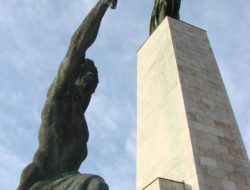
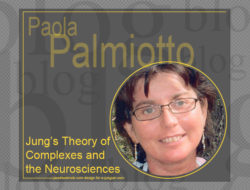
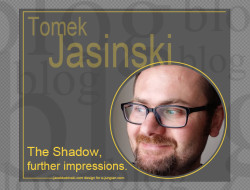
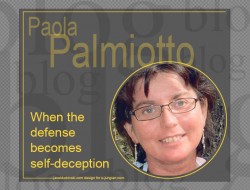
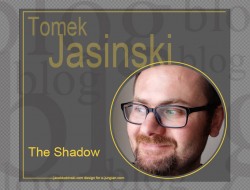
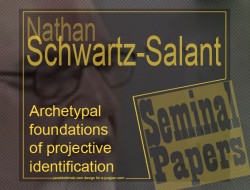

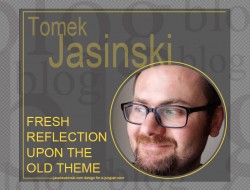
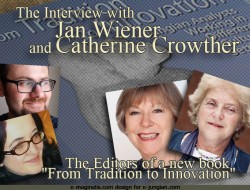
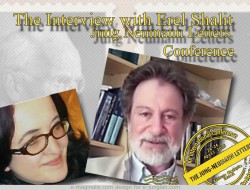


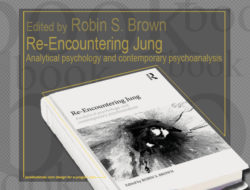











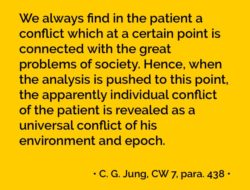
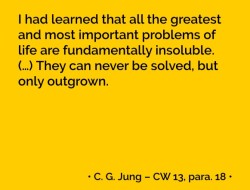
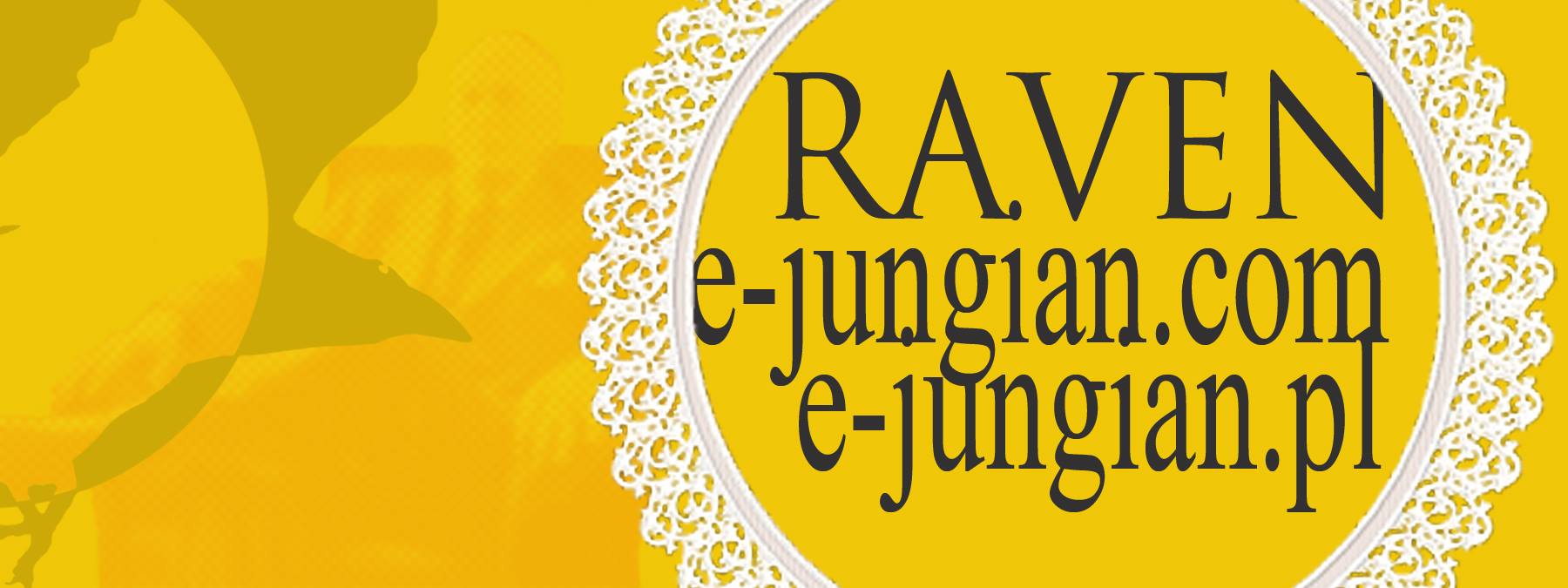

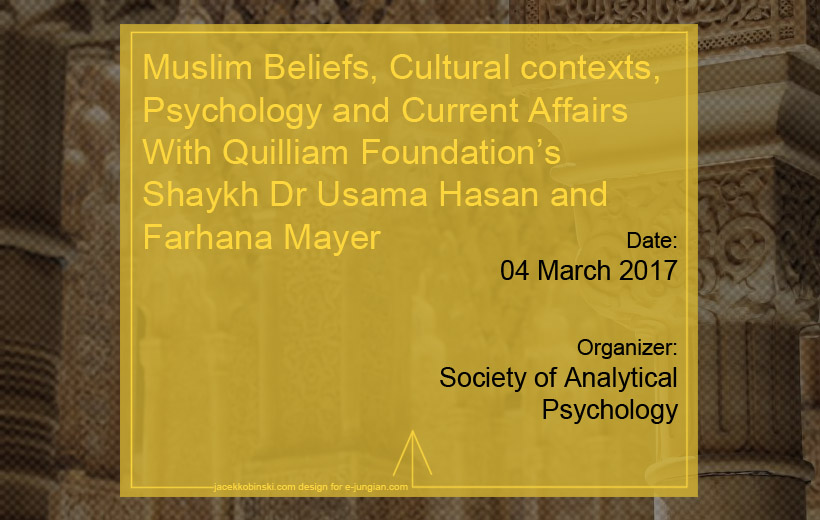
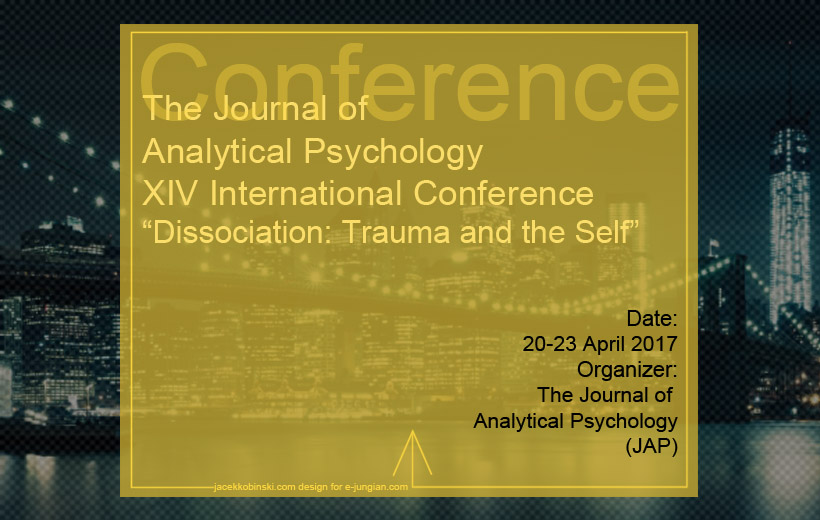
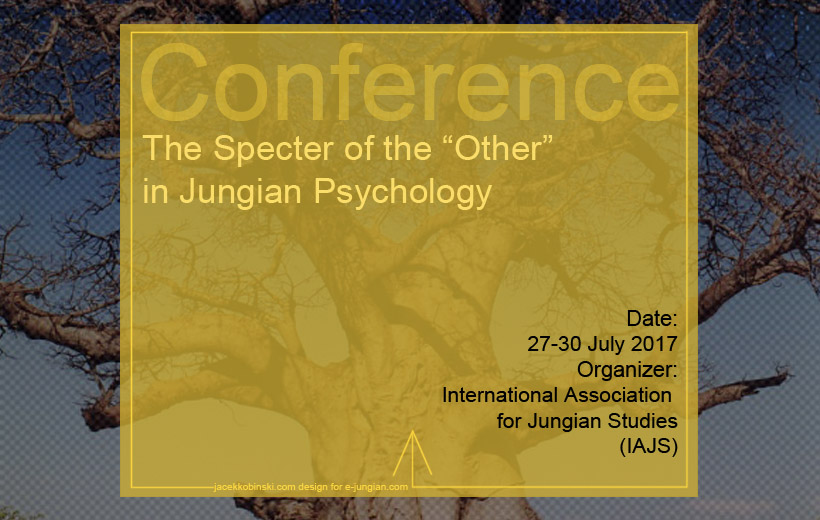
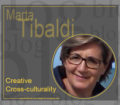
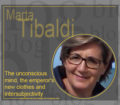
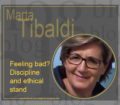
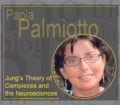

This is an easy-to-read, thorough, well-illustrated and well-documented book about the collaboration between Toni Wolff and C.G. Jung.
For anyone interested in Jung and his work (or to form part of an early introduction to it), this book illustrates in a real-world and valuable way how important one of Jung’s key tenets was, namely, the pressing need to reintroduce the genuine Feminine into the everyday life of modern society through deeply experienced relationships.
In my view, however, the proverbial “with a grain of salt” approach is needed when reading this book.
As an interested layperson over many decades, I’m familiar with most of the books cited in this account of the relationship. Very often, I became aware of various “omissions” which occurred among a number of quoted authors etc. Or certain timeframes were ignored, or in my view, an approach to an issue tended to be too narrow and restrictive so that as a result, a fuller and more accurate picture of an overall situation failed to appear.
So my belief is that, in trying to right the genuine wrong of how the contribution of Toni Wolff has tended to be currently ignored by much of the Jungian community, a certain destructive over-compensation has crept into the book.
To be clear, I’m not questioning the quality of the enormous research involved in creating this book, the quality of the writing, or the accuracy of the quotes per se.
But in my view, the overall result of apparently trying to, as it were, partly cover up Jung’s statue and to have one of Toni Wolff set up beside his is unhelpful. This works against the creation of an enduring and valuable contribution to her lasting legacy.
As a general example, I found that, while Jung was often generously given his rightful due as an incredibly productive and original person, these comments were usually fairly brief, often followed by the persistent theme that Toni Wolff had been badly wronged by him, and she was in fact more brilliant than he was.
In addition, another clear theme emerges that, while Wolff’s faults can be pardoned, Jung’s cannot.
This includes the presentation of incidents that show how cruel Jung could indeed be to Toni Wolff at times. But I believe there was a failure to bring into the equation a discussion of how, in effect, this showed Jung’s genuine attachment to obtaining the desired goal of reaching towards the “wholeness of the personality”.
That is, the shadow, with its repressed desires and uncivilized impulses, morally inferior motives, childish fantasies and resentments etc., wasn’t repressed by Jung but instead, was kept fairly close to the surface, especially during his younger years.
For example, he didn’t attempt in any way to hide from his wife and children his unconventional and often disruptive alliance with Toni Wolff. This was partly to ensure that his daughters would not end up like, say, those of Milton, unmarried and tending to an old, blind man.
In contrast, I believe that the subject of Toni Wolff’s shadow isn’t fully delved into, again in the perhaps understandable but, I believe, ultimately unhelpful desire to elevate her to the level of being a “goddess”.
To help illustrate this apparently outrageous statement, and to touch more deeply on the issues not only of largely ignoring Toni Wolff’s shadow, but also of sometimes subjecting Jung to a different analytical approach in general, let me outline some areas of argument found in the book.
For instance, there is a lot of discussion about the transference (essentially, the patient falling in love with the doctor).
As with other stated opinions in the book, one has to carefully follow the thread among the voluminous quotes presented in order to detect a certain bias.
In this case, Jung is pictured as not being nearly responsible enough in curbing this tendency for a female patient to become enamoured with him.
It’s also outlined how he believed that friendships could continue after an analysis was completed.
So overall, this inclination to “mesmerize” women is implied to have very badly affected the outcome of Toni Wolff’s life as a whole.
The fact is ignored that at other points in the text, she’s described as being on a par with Jung’s intelligence or even higher, and to have had very refined powers of intuition and discrimination.
In addition, she’s described as being able to display a tenacious nature when required.
So it does seem to me it’s a non sequitur to imply that Toni Wolff didn’t really make certain very conscious decisions about continuing a life-long relationship with Jung. Instead she’s presented in essence as having been in effect “mesmerized” by an unscrupulous and cold Jung.
While staying in a relationship with Jung involved painful compromises, it enabled her to work as a senior collaborator in an atmosphere of intense intellectual activity which she loved.
At one point, the blatant statement appears “However, rather than ruining his daughters’ eros [by suppressing the call from his deep psyche to allow the formation of an intimate relationship with Toni Wolff], Jung would, in time, ruin Toni’s”.
I believe that this statement is too extreme, given the evidence even as presented in this book.
Another key point for me in this is that the fact psychotherapy was essentially very new and evolving when Jung started out (and remained in a state of flux for many years afterwards), is not emphasized in any meaningful way.
Mistakes were made, but, for example, I haven’t heard of anyone criticizing Mme. Curie by saying that she should have known that radium would cripple her hands and probably caused her leukemia.
That is to say, the psyche can be as dangerous as any physical radioactive substance, so being too close to it (as was certainly the case in the early years) is likely to cause terrible problems if one doesn’t take precautions. The nature of these precautions had to be learned over time and Jung did gradually absorb the nature of the changes that had to be made.
One major danger, as Jung came to realize, was found to be an identification with the archetypes (causing an inflation of the ego), something that at times he and his colleagues weren’t immune to.
In addition, quotes about the danger of the transference and the need for distance etc. are from analysts who wrote decades after Jung, quoted in my view as if to suggest obliquely that Jung should have known about the pitfalls but was badly flawed in not knowing about them.
No one now questions the validity of these later ideas, but for me, these healthier approaches in the Jungian community sprang partly from the fact that Jung himself, at root, was essentially open to new ways because he was always open to what the psyche was saying. In my view, it’s because this basic attitude of Jung’s filtered down to the analysts in training that change has generally been embraced by Jungians over the decades.
To return to how the subject of the transference is dealt in a practical way by the author as regards Toni Wolff herself, a number of quotes attest to the latter’s warm qualities, brilliant mind, skills as an analyst etc. etc.
Barbara Hannah is even quoted as saying “She was not beautiful in the strictly classical sense, but she could look far more beautiful, more like a goddess than a mortal woman”.
Others describe her as being like a “queen”, “Nefertiti” and a “prophetess”.
These designations aren’t questioned or commented on in any way by the author.
As described above, such descriptions can be caused by unconscious projections, partly the result of a transference, making their validity somewhat suspect in certain situations.
For example, although it can be a delicate subject for some, Ms. Hannah was a lesbian who was very close in age to Toni Wolff, so it’s not impossible that she was in love with her at some point, prompting the description of her as a looking like a “goddess”.
This is being mentioned only because the potential situation of an extra-biased viewpoint isn’t touched on, in passing or otherwise, in this context when it could be a factor in the extravagant praise quoted regarding Toni Wolff.
Similarly, some of the others quoted were patients of Toni Wolff and, as described by the quotes on transference as presented in the book, the relationships with analysts can become very close, sometimes to the point of affecting objective judgements.
I wouldn’t really mind the unquestioning listing of how many admired Toni Wolff’s talents and intelligence etc. if the same general approach were used regarding a similar situation regarding the transference and the “admiration” of Jung.
In that circumstance, we’re instead given the statement:
“Becoming friends with Jung under the spell of the transference, even as they assumed roles as friends and colleagues, a number of this former female patients (known subsequently as the ‘maenads’, the ‘Valkyries’, or the Jungfrauen) retained immense projections upon him, resulting in excessive levels of loyalty both to him and to his theories”.
No actual evidence for this statement is presented. In addition, a number of Jung’s former female patients became respected analysts in their own right.
A further remark appears in the notes:
“M. Esther Harding’s extravagant praise of Jung was typical of the Valkyries: ‘That C.G. Jung was a giant among men must be obvious to all who have had even a slight acquaintance with the man or his writings’ (M. Esther Harding ‘The Early Days’ 179)”. Why then is Toni Wolff permitted to be called a “goddess” without further comment?
For me, there’s also more than a slight hint of cattiness in the passages noted above.
Another general point is that I believe there is an understandable but basic flaw in the book, namely, that the figures of C.G. Jung and Toni Wolff are being viewed in overly personal terms.
This may seem to be an unusual statement, but in reality, they were both more interested in, and attuned to, the archetypal world, essentially the “non-human” and “non-personal”. This fact is actually made explicit in the book on various occasions.
But an overly strong lure to look at their “human” sides and their failings etc. in my view obscures what the main goal of the author should be: to establish Toni Wolff’s timeless role in working with Jung to create an unassailable description of the workings of the archetypal psyche.
That is, perhaps it might have been better to describe in detail what this really meant in practical terms.
In my opinion, another discrepancy appears in the discussion of the shadow or “dark side” of Toni Wolff as opposed to how Jung’s failings are handled.
For instance, Toni Wolff is described as being somber, an aunt who “never laughed”, of having “no sense of humour, absolutely none”, as being “remote”, “unapproachable”, “tactless”, her personality could be found to be “unpleasant”, working with her was like “wrestling with a boa constrictor”, and in her running of the Psychology Club she elicited the nickname “the club tiger”.
But the author, having been quite open in recording these opinions, begins to counteract them.
As an example, we’re told: “Because Toni Wolff was so deeply introverted, at times her timidity was mistaken for disinterest or disdain”.
But no contemporary evidence is presented to support this assertion in the form of, say, explanatory diary entries by Toni Wolff about this issue, or other attestations about how she may have spoken to others privately about this perception etc.
Therefore, in my view, it’s equally possible to assert that at times, her manner was indeed motivated by “disinterest or disdain”, depending on whether introversion alone can be blamed for the perceptions of others in all cases.
Jung is quoted as acknowledging her “gruffness”, calling it that “untouchable flaw”. He also responded to a patient of Toni Wolff’s (who complained that the latter resembled “a grouchy old man with gout”) by saying that people with a special gift can have such a side to them because their gift is something original and unmanageable.
Immediately after this comment, the author writes:
“But upon further reflection, MOST AGREE [CAPS mine] she meant no harm; she simply spoke her truth as she saw it and sidestepped the niceties of social intercourse in order to directly reveal the reality of the unconscious”.
However, there are no explicit quotes or other documentation, in the text or in the notes, to properly demonstrate this conclusion.
In fact, I believe the following which appears in analyst Jane Wheelwright’s definition of the animus in “Death of a Woman” provides a more accurate picture of the situation:
“When not consciously related to, the animus causes a woman to be opinionated, argumentative, rigid, controlling, and excessively critical of herself or others”.
It’s also interesting to note that Healy doesn’t refer to this quote or any similar ones later in the book when arguing that Jung was wrong in always discouraging a woman’s expression of “feelings” because he attributed them to a negative animus.
So just to emphasize, one problem as I see it is that, while Jung’s shadow side is presented as thoroughly if not more so than Toni Wolff’s, I can’t recall a statement being made in the book which exonerates him in a similar way to the one above.
Upon reflection, I believe that if the exoneration quoted had “she” replaced by “he”, it could just as well describe Jung’s situation. This is especially true in the case of Jung’s earlier years when, as he writes in “Memories, Dreams, Reflections”, he was driven by his Daimon and made many enemies because of his brusque and often unbending persona.
Next, it looks like Jung’s daring acceptance of the shadow in general will be lauded because it’s first described in detail how Jung introduced various methods into the Psychology Club (and by encouraging masked balls etc.) in order to have analysts and clients “encounter each other’s less integrated psychological aspects, their shadow sides, in order to stimulate their personal development”.
Also described is a game Jung devised to break members out of their social stiffness by compelling them to toss around a knotted handkerchief while standing in a circle, and when it was caught, an embarrassing secret was to be divulged or an insult hurled.
The author then records:
“The game offended some but not C.G.”
For me, there is some room for believing that this could be a fairly clear put-down of Jung’s penchant for regularly bringing the shadow into the life of the analysts, patients and others in the wider circle of Analytical Psychology at that time.
Maybe I’m being too sensitive in wanting to defend Jung’s actions in his overall desire to make the shadow visible in others and himself in line with his theoretical approach. But although there are a couple of quotes supporting what happened at these goings-on, a certain preponderance of other firm and negative rejections of it then appear.
For example, Marie-Louise von Franz is referenced as saying that the behavior of the members of the Psychology Club was bad-mannered, and that people from the outside “were shocked out of their wits by the rude, bad behavior and the absolutely unending quarrels this group displayed”.
However, is it possible that the “people from the outside” did eventually see the potentially more authentic behavior of those concerned which developed and appeared later in other circumstances? This avenue of possibility isn’t explored in the book.
Another very definite rejection of this social and potentially “show-the-shadow” method is soon marshalled, coming from Toni Wolff herself. When asked her advice on how a Psychology Club in San Francisco should be organized, she replied:
“I think you are very right to want to squash the agitation for more social life. It only comes from those who don’t have enough of their own – probably mostly unmarried people badly adapted to social life…”
Perhaps an even more telling example regarding a possible dislike of, and potential deliberate suppression of shadow issues by the author, is that a kind of omission occurs when discussing the fact that, at one of the masked balls, Toni Wolff appeared as Queen Nefertiti.
As mentioned, these balls were essentially meant to allow the participants to display shadow aspects of themselves. However, there’s not even a hint of speculation or analysis as to why Toni Wolff appeared particularly as Nefertiti.
Instead, we’re told only that it was “a costume that members remembered for years because it suited her so well”. A photo is even supplied of Toni Wolff in her costume along with a photo of the bust of the beautiful Queen Nefertiti.
I’m guessing that the subject is avoided, unconsciously or otherwise, because even a rudimentary application of the psychological method, whether Jung’s or some other school’s, could show a negative side of Toni Wolff that would possibly have been too strong for the author to accept.
To explain this idea in more detail, Toni Wolff is described by analyst Jane Wheelwright as a “very introverted woman, as introverted as anyone could be”, by Barbara Hannah as “an extreme introvert”, by Toni Wolff herself “I am certainly an introvert”, by Jung’s son, Franz, as living almost entirely in the archetypal realm, by the author as “Essentially a romantic, she was drawn to the world of fantasy and felt at home in the enchanted lands, the natural domain of the imagination, realms that she found more interesting than everyday reality”.
We’re also told how Toni Wolff was deeply ill at ease with the fact that she had no university degree and therefore, none of the “acceptance” in her circle that would go along with it, especially in the academic world and society of her times (more on this later).
The generally accepted approach would be that usually, such a person’s psyche would automatically create some sort of balancing trait, in many cases taking the form of a very robust power complex in order for the ego to experience at least some sense of authority and status in the outer world which unfortunately can itself then add to a “fantasy” approach overall.
If we also use the Jungian method of amplification and examine the real-life Nefertiti, one important salient fact emerges, namely, that at one point she was not just the pharaoh Akhenaten’s queen, but a co-regent with a status equal to that of her husband.
This particular pharaoh, of course, was someone who smashed the old worship of an endless number of Egyptian gods, replacing them with worship of Re, the Sun God.
The parallel with a pharaoh who worships a strongly masculine form of the Self and who has an equally powerful woman as his consort seems very apt in the circumstances of Toni Wolff and Jung.
For me, it looks like the odds are in favour of believing that, at various times, they may have been gripped by an equivalent archetypal delusion, especially in the case of Toni Wolff whose extroverted side was not nearly as strong as Jung’s, and therefore, her ego relied on a certain degree of fantasy to survive.
Along with this strong possibility of the existence of a very forceful power complex (which, as mentioned, is not in any way explored by the author), there is another interesting parallel that might exist between Toni Wolff and Miss Miller as found in “Symbols of Transformation”.
There, Miss Miller is in the bath, winds a towel around her head, and at that instant had the following impression:
“… it seemed to me, for one moment and with a breath-taking clarity, that I was on a pedestal, a veritable Egyptian statue with all its details; stiff-limbed, one foot forward, holding insignia in my hand etc.”
There are statues of Nefertiti similar to this description which Toni Wolff may have seen.
In any case, Jung writes:
“Miss Miller is now identifying herself with an Egyptian statue, obviously on the basis of an unrecognized similarity. What she means is: I am like an Egyptian statue, just as stiff, wooden, sublime, and impassible, qualities for which the Egyptian statue is proverbial”.
This isn’t meant to say that Toni Wolff was always like this, only that it could likely have been part of her shadow, with some personal form of which we all have to deal in everyday life.
The author later comes to make a statement that could potentially badly undermine Jung’s reputation as a perspicacious individual; namely, that Jung, contrary to his own opinion, was not an introverted thinking/intuitive type.
While the author rightly states that “Jung possessed a varied personality, one able to access a number of different psychological functions at once”, she goes on to write, for example, that he was very wrong in believing that he was a thinking type and was, in fact, chiefly a feeling type.
A typical piece of evidence is that Irene Champernowne said that he expressed himself consistently “with feeling”.
In my view, quoting this and the other similar examples shows a fundamental lack of understanding regarding the terms “feeling” and “emotion” as discussed in “Psychological Types”. Emotion per se is usually connected with the inferior function and not with the superior one.
While the difference between feeling vs. emotion is discussed by Healy, I personally don’t think she fully grasps the difference between “emotional affects” and other types of “feelings” which derive instead from a mature feeling (valuing) function.
Marie-Louise von Franz is quoted regarding the type question (introvert or extrovert):
“[Individuals] very often assure you with absolute certainty that they belong to a type opposite to what they really are”.
However, the “individuals” she is speaking about are patients, people off the street who are ignorant of the orientation type and functions theory. I don’t think we can say that Jung fits this category of persons.
In contrast to dismissing Jung’s belief about his type, Toni Woolf’s assertion noted above (“I am certainly an introvert”) is not in any way discussed or challenged on the same terms as Jung’s.
In addition, while Deirdre Bair’s biography “Jung” is quoted in other matters, in this case, the following quote is ignored (although the idea is touched on to some degree in Healy’s book):
“… many people, including his wife Emma, made a recurring observation: that the ideas a patient brought to Jung were far more interesting than the actual person”. (Chapter 18, “Psychologically Minded” Persons)
Examples include Alphons Maeder saying that Jung was “far more interested in the ‘science’ of disturbed minds than he was in disturbed patients themselves”. Cary F. Baynes told Jung “he was more interested in the ideas people brought him than in the people themselves” to which Jung “roared with laughter but didn’t disagree”.
For me, this points to the intellect being the prominent function in wanting to logically “solve a puzzle”.
The author says point blank that Jung “misdiagnosed himself as an introvert”. Again, a type is a PREFERENCE and Jung, in order to reach a higher level of status as well as of understanding in general, knew that he had to immerse himself in extroverted activities with other people. This idea of never putting aside the inferior parts of oneself became a mainstay of his approach for anyone wanting to genuinely strive towards individuation.
Logically speaking, based on “Personality Types”, if Jung was predominately an extrovert, and feeling was his main function, the latter would be extroverted as well.
For me, this doesn’t fit with the various descriptions in this book and elsewhere of very difficult and awkward behavior in the relationships with his wife Emma, Toni Wolff, friends, various colleagues and others.
Most of the time, if he were this type and function, his extroverted feeling should have been running like a well oiled machine regarding relationships with other people. Clearly, this was often not the case.
Toni Wolff’s work as an analyst is described as becoming “more intimate, personal and supportive of the individual” as opposed to dealing with archetypal issues. But there’s no mention made that perhaps her intellectual bent (clearly described in other parts of the book) prompted a very thorough probing of the personal history of the client in order to “solve a puzzle”, and therefore it didn’t really spring from a differentiated feeling function per se. In fact, in other another part of the book, others comment on the very poorly developed state of her feeling function.
It’s specifically mentioned in this book and appears elsewhere that Toni Wolff herself was not able to practice Active Imagination and to elicit images from her own psyche (even though, of course, she was able to assist others very capably to say the least in understanding images from the unconscious). In my view, this could possibly indicate the presence of a very deep inner split, but any such possibility is not in my view discussed in an adequate way directly or indirectly in the book.
In any case, whatever the true nature of her approach, it did serve her well in some ways, though, as it’s described how she became in her 40’s and 50’s a figure of great stature within the analytical community. Apparently, the deepening atmosphere of needing to “keep the secret” from the training analysts and the public at large regarding the earlier relationship with Jung gradually led to the “don’t talk” rule about Toni Wolff and the diminishment of her rightly deserved reputation as a profound soror mystica to Jung.
Just to add another point that, although the reason is given that Toni Wolff met Jung in the first place because of a very serious depression following the death of her father, this book doesn’t touch on that issue again. Doing so would likely be useful in order to trace the possible effects of her father complex on her convoluted and difficult relationship with Jung.
I think it’s safe to say that Toni Wolff was a driven woman. Analyst Helen Luke writes about how some intellectually gifted women despair of not having original thoughts and therefore feel guilty:
“To those of clear mind and differentiated feeling it may come in the manner expressed by my friend. In a great many others the guilt produces a positively compulsive desire to go to school – to acquire academic degrees – to own pieces of paper to prove academic achievements which, they believe, will prove at last that they are people of worth” (“The Life of the Spirit in Women”)
So this issue of “worth” might be a key factor in how Toni Wolff lived her life, although in my view, this perhaps distorting influence isn’t really tackled enough in Healy’s book.
As stated earlier, while there are very many positive points to recommend this book, sadly I came to believe through a closer reading that there tends to be an underlying bias, however subtle and easily unrecognized, which in my view unfortunately vitiates the chance for a valuable and lasting written legacy to have been finally created for Toni Wolff.
For me, this partiality consists of a mostly surreptitious or unconscious attempt to unnecessarily elevate Toni Wolff’s status, partly through attempting to minimize Wolff’s more serious shadow issues (even though, at first, these are nonetheless candidly described in the book). In my view, this type of approach is not needed in order to clearly demonstrate Toni Wolff’s indispensable contribution to Analytical Psychology.
In addition, there’s a traceable tendency to, in my opinion, overly tarnish Jung’s image in contrast to Toni Wolff’s, regardless of the fact that he is often praised in various ways throughout the book.
Unfortunately, the result for me is a kind of topsy-turvy pile of accumulated conclusions that, while overall they may seem “objective” and “scholarly” on the surface, some turn out not to be well supported in certain important cases.
This situation injects what I feel is an unnecessary and disruptive element into the book which undermines its potentially great value.
I began reading the book in March 2017, and as mentioned above, I found a number of what I felt to be certain inaccuracies and other faults.
Even after a long review that was posted elsewhere in August 2017, I found a need to formulate a clearer explanation of certain issues and to add more areas of concern. Some of these additional thoughts are outlined below.
As an example, regarding Nealy’s discussion of how Jung was completely wrong in viewing himself as chiefly being an introverted thinking-intuitive type, I’d like to point out that this book shares the same omission which occurs in other papers whenever this topic has cropped up over the years. Namely, that a core aspect of Jung’s psychology, the role played by dreams, is always ignored.
In a nutshell, I think it’s safe to say that dreams from the Jungian point of view are the broad equivalent to those processes which keep our physical bodies in an equilibrium.
On the physical side, automatic adjustments are continually made to keep a person’s temperature, blood sugar level, water content etc. etc. at appropriate levels.
In an equivalent way, dreams try to maintain an overall psychological balance which will allow for the gradual all-round self-development of the dreamer.
If indeed Jung were so completely wrong in his self-assessment, he would have left himself vulnerable to the hidden (or otherwise) ridicule of others in that, having been the author of “Psychological Types”, he was woefully unable to apply its principles to himself (I believe that even the author makes this point in her book).
Healy seems to imply that many people in his circle held the belief he was wrong in his views about his CHIEF orientation type and functions. I capitalized the word ‘chief’ because the psyche is a fluid mix of one’s psychological makeup.
If this were indeed the case, then in my view, any such basic, negative assessment of Jung’s competence could potentially be a stumbling block for his ability to effectively proceed in influencing others outside the Jungian community .
Referring to the principle of compensation, his dreams would highlight any such problem to him IF he were unconscious of it. For example, Jung’s profound intuitive gifts are well known and he could easily have intuited the fact that this belief existed among certain individuals.
If so, we can perhaps reasonably assume that he was unconcerned about their essentially mistaken belief and said nothing.
Just to add that, in my opinion, his wife or Marie-Louise von Franz or others very close to him would certainly have tried to alert him to this kind of situation.
Of course, this begs the question as to why, if a very astute Toni Wolff herself became aware of this apparently totally mistaken opinion of his (in the view of Healy and others), she wouldn’t have then alerted Jung to his precarious position in the eyes of others, given her very close relationship with him as described in the book.
I think the answer is that, had she known, she would indeed have done so, and Jung would have taken her words to heart, making any adjustments to his views, however uncomfortable doing so would have been.
But in an unusual twist, it turns out that in the particular area regarding the functions, Toni Wolff was apparently very lacking in her ability to analyze the dominant function correctly. (Please see below for a further description of this situation, and how this fact was omitted by the author).
To continue, if we consider that for some reason, Jung intuited nothing regarding any such issue and otherwise heard nothing about it, then in theory, persistent dreams of a similar theme (perhaps related to a problem in the persona) would almost certainly have appeared and continued in order to alert Jung to any such potentially damaging circumstance.
One might argue that the author has already blocked this line of inquiry by pointing out that it’s difficult to evaluate one’s own psyche, even quoting Toni Wolff as saying it is “almost impossible”.
But we know that, while analyzing one’s own dreams can yield, say, only a “good” interpretation as opposed to one that’s “very good” or “excellent”, Jung shows in “Memories, Dreams, Reflections” that he was quite capable of analyzing his own dreams and applying the results.
Late in life, he analyzed a dream of his own which led to the reversal of his firm decision not to oversee the creation of a book about his approach to psychological matters that was to be directed to the general public (This is described in the introduction to “Man and his Symbols”).
Overall then, we can probably safely assume that, from the point of view of Jung’s psyche, there was no problem with his viewpoint regarding his chief orientation type and functions, and therefore, no recurring dreams appeared.
Or if a few dreams had appeared at some point about this topic, Jung would presumably have carefully considered them (and perhaps even solicited the advice of those very close to him). If so, in the end he probably deemed his own assessment of his main orientation type and functions to be essentially correct, and the effects of those who disagreed with it to be of no lasting importance.
As an example of sometimes “incomplete” quotes that crop up in the book, it’s interesting that Nealy, in making her argument of saying that it’s almost impossible to accurately determine one’s own functional type, the author refers at one point to how Jung admitted this fact to Barbara Hannah (“‘mistaken diagnoses of type’ occur frequently”).
But if one looks at the notes that are provided, and compares them with the original description on p. 200 of “Jung: His Life and Work”, an interesting fact regarding what I would call “emphasis” emerges (one that points again, in my view, to a certain desire to underplay Toni Wolff’s weaker side, as it were, which I’ve outlined crops up in the book quite often in a subtle but persistent way).
The notes in question describe how Wolff had thought Hannah’s sensation function was her strongest. Jung demonstrated in a simple way that it was not. The author sums up by writing “He knew that often one’s weakest function can be confused with one’s strongest”.
Just to mention as an aside that, if one reflects on this passage, it seems clear that if Jung could enunciate this viewpoint, he would also have re-examined at some point his beliefs regarding his own chief orientation type and functional types after becoming gradually more aware of this confusion etc. that presumably would have appeared regarding patients in his own clinical practice and among others in his circle.
One can safely assume that after having done so, he would have made any appropriate changes to how he viewed this issue and how he expressed it to others, but this is not the case even to the end of his life.
In addition, to broadly suggest that Jung was apparently incapable of examining such an important aspect of himself seems to be untenable (especially when the author demonstrates that many of his views and accepted theories written about in his books came from examining his own life circumstances).
To my point that the author tends to minimize Toni Wolff’s failings, the general impression is given by Healy’s notes above that only a small and understandable misunderstanding had occurred on the part of Woolf regarding Barbara Hannah’s chief function.
But in “Jung: His Life and Work”, the full quote regarding “mistaken diagnoses of type” is as follows:
“Jung once told me that these mistaken diagnoses of type, ALTHOUGH TONI WAS TOTALLY UNCONSCIOUS OF THEM [CAPS mine], were sometimes extraordinarily fruitful in analysis, FOR BY BEING SURE HER ANALYSAND’S INFERIOR FUNCTION WAS SUPERIOR AND CONSCIOUS [CAPS mine], she developed it in a remarkable way”.
As mentioned above, this again suggests that the author tends to shy away whenever possible from exposing certain of Toni Wolff’s shadow issues and failings etc. Why hide them in this case when they’re balanced out by such a positive statement? I would hazard a guess that it’s because this particular incident wouldn’t be a “clean” depiction of her skills in contrast to those which could easily be mustered in other situations.
When it comes to Jung’s thinking function, the author apparently believes that thinking must always be only of a strictly linear and logical type to be of any real value, a common enough idea in our modern societies. Anything else is a sign that it isn’t the person’s prime function.
She states:
“His writing style has been described by many as intricate, convoluted, and even torturous… heavy and laborious… repetitious, wordy and poorly expressed”
and:
“He possessed a very fine, if not brilliant mind; however, due to his strong feeling attributes, his ideas tended to travel in many directions at once, veering off onto tangents, as we have seen, circling back upon themselves, then digressing onto side roads before returning to the main point”.
In the note related to this quote, supportive proof takes the form of a story from C. A. Maier that during his ETH Lectures (Swiss Federal Institute for Technology, 1933-1941), according to the author, “Jung assigned reports to his students, but when the day came to present, he failed to call upon them, preferring instead to speak extemporaneously instead”.
Unfortunately, not having access to the C. G. Jung Biographical Archive from which the quote is taken, I can’t form any sense of whether this type of thing occurred on a handful of occasions or on very many occasions during this eight year long period.
In any case, for me, this doesn’t seem to prove that Jung was particularly “illogical” and not a strong thinking type (albeit an “analogical or fantasy think[er]” as he apparently implied he was to Freud), or even that he had a poor memory (which is quite unlikely, of course, as we know partly from Aniela Jaffe’s comments in the introduction to “Memories, Dreams, Reflections”).
It’s possible that this citation could even be used to counter the author’s argument that Jung was chiefly an extroverted feeling type since presumably, as his chief function, he would be loath to upset any pleasant feeling atmosphere by the implied situation of consistently and rudely forgetting that students were expecting to be able to present their papers at the lectures.
Instead, it seems more likely that Jung, who was always attuned to his psyche, was listening to the latter which may have occasionally suggested that the moment was right for saying what he wanted to say (instead of listening to a student’s paper), possibly because of the unknown possible effects his comments could have made synchronistically on one or more of the participants at the lectures (which were open to students at the ETH, the general public and Jung’s followers).
In addition, the negative comments by others regarding his writing style could possibly be attributed to the fact that they made no accommodation whatever for the fact that their own orientation type and functions were different from those of Jung’s, this being an optional way of looking at the situation which is not even hinted at by the author.
In my opinion, a more accurate assessment than the author’s and others of how Jung expressed his thoughts in writing can be found in “The Transcendent Function: Jung’s Model of Psychological Growth through Dialogue with the Unconscious” by Jeffrey C. Miller, Forward by Jungian analyst Joan Chodorow.
In describing how he will approach the very complex subject of the Transcendent Function, Miller states:
“… this will not be a linear progression; indeed, a straight line cannot accurately reflect the relationship between and among these concepts [as expressed by Jung in eight written works, four letters, and in five public seminars]. Instead, imagine Jung’s ideas as a web with each idea inextricably intertwined with the others; each flows from, implicates, and relates to the others. By jumping onto this fascinating web of ideas, we will interact with it without fear of getting caught up or stuck, and thus will avoid attempting to reduce it to some final explanation”.
It’s clear that Miller uses such words as “concepts”, “ideas”, and especially “each idea flows from, implicates, and relates to the other” (as opposed to words linked to “feelings”), providing in contrast to Healy’s descriptions, a much more accurate picture of Jung’s structured approach overall.
An additional cogent and, in my view, accurate view of Jung’s orientation type and functions appears in analyst Robert Johnson’s memoir, “Balancing Heaven and Earth”. There he describes how, as a young man, an unexpected and unusual meeting with Jung had come about because his wife Emma (who was analyzing Johnson) passed on to her husband a copy of an archetypal dream that Johnson had had.
The dream in effect was picturing all of Johnson’s potential future life. Johnson writes that it was if Jung was able to read his mind. In part of the conversation that occurred, Jung said that although Johnson had always hungered for community and probably would always continue with this yearning, this path was not the proper one for him. He made other blunt statements such that Johnson should never marry or join any organization. An in depth analysis of the dream was also provided. The whole incident tended to overwhelm the young Johnson.
But the latter was profoundly touched because Jung had seen a potential in him, along with dangers ahead. Johnson writes:
“I remember sitting there thinking ‘This man is just like me, except infinitely wiser. He understands me completely… But I can see now that this was part of his genius. He was not like me at all, but he was capable of making me feel as if we were of one mind. Later, when I saw him in other circumstances and realized our personalities were quite different, I thought, ‘This man has deceived me. He tricked and manipulated me.’ But as I reflected on that day in Kusnacht, I realized that he had given me a very special gift. Not only did he know how to speak English to me, he knew how to speak in the typology I could best relate to. He chose examples and even figures of speech that were consistent with my introverted-feeling type personality. This, it seems to me, is pure genius. … He was a great intuitive thinker, but he did not speak to me in an abstract intellectual language; he addressed me in the feeling language that I could relate to.”
I believe that this reliable account clearly shows that Jung could put on the persona of whatever personality type was best for the moment in order to achieve his ultimate goal of growing the school of Analytical Psychology (whose members consisted of very diverse personality types). Many of those who experienced this phenomenon, unlike Johnson, apparently remained forever unaware that the image of the man which they had experienced had in some ways been “put on” in order to “deceive” and “trick” them, in effect to win over their loyalty to him and to the cause of Analytical Psychology.
Healy states that another proof of Jung being a feeling type and not a thinking type was shown by the fact that he had resigned his “thinking” post as a lecturer in the medical faculty at the University of Zürich in 1914 in favour of lecturing only at the Psychology Club.
Personally, I believe that his resignation had more to do with the increasing stresses related to his having left the Freud camp and generally being rebuffed in general by many members of the psychological community as described in Deirdre Bair’s biography and elsewhere.
Final thoughts on the type question and how it appears to be used to demean Jung’s judgement on matters close to him (and to unduly elevate Toni Wolff’s role) include Healy’s statement regarding “Psychological Types” itself:
“Among the over seven hundred pages in ‘Psychological Types’, two chapters in the book have garnered the most attention – the last two chapters, X and XI. They have been regarded by many as the centerpiece of the work”. The overall tone of this section of the book is that the bulk of “Psychological Types” is in effect not worth reading because of Jung’s poor thinking and writing abilities.
The fact is omitted that Jung himself decried that these two chapters were the only ones which anyone read, when in his opinion, it was very important to read the entire book. Jeffery Miller in his book emphatically agrees with Jung that “Psychological Types” must be read carefully in its entirety because it’s the core of his psychology regarding not only the type theory per se, but also regarding the theory of the opposites and the centrally important theory of the Transcendent Function.
Healy next follows up with her theory that these particular chapters are so admired because it was actually Tony Wolff herself who wrote them (or at least reworked the concepts expressed earlier in the book into a “logical” form).
This is a plausible argument in some ways, but why indirectly belittle the rest of the book which Jung believed was so important?
It may also reveal that Healy possibly belongs to the “logical thinking, thinking in words” group as written about by Jung to Freud in 1911 (as cited in the book) which is probably not Jung’s group.
Therefore, the implication potentially could be, that apparently not being a trained analyst herself, Healy has failed (like the others she described as making negative comments about Jung’s thinking function) to adequately allow for any such difference in approach between Jung and herself personally.
If so, this could clearly result in a certain negative colouring of Jung’s approach in favour of a viewpoint partly based on her own personality type, unconsciously or otherwise.
Intrepid sleuths may wish to follow up the interesting detail that Jeffery Miller uncovered in his reading of this seven hundred page book and how it might possibly relate to Toni Wolff as well.
It’s in “Psychological Types” that the first mention appears anywhere in Jung’s works of the term “self” (not capitalized as was decided upon for all references to the Self in the Collected Works). It’s linked essentially to the “source” of everything in the psyche. In the discussion, it’s the place where the libido returns when the ego can no longer manage the pressures of the warring opposites.
But as Miller notes, there is no reference made to the “self” at all in the systematized, parallel descriptions in Chapter XI as found under “Symbol”. He speculates that perhaps Jung hadn’t finalized his thoughts on the Self’s relationship to libido per se, but there might be other factors involved.
On the subject of Active Imagination, the author states that Jung was well suited to using the visual aspects of AI along with dream work in approaching the unconscious.
However, she then states:
“But Jungians today use a variety of techniques to mine the psyche, as Jungian analyst Phillip Zabriskie offers: ‘Imagery is not the only way in which the psyche manifests’. The unconscious can be discerned by attending to one’s feelings, one’s actions, one’s body, and even to outer events in one’s life.”
While this is true, the implication is that Jung was totally unaware of any other ways than visual AI and dreams in order to approach the unconscious and to stimulate feedback from it.
Once again, Jung is shown as “lacking” in some way when in fact, he was not. (One could also ask what relevance this particular digression by the author has to do with an exploration of his collaboration with Wolff. Is it therefore simply used to lessen Jung’s reputation in this particular area regarding AI? As it turns out, the author’s implication that Jung didn’t know of other methods of AI is incorrect, apparently through her failure to have adequately explored easily discovered facts).
In contrast to Healy’s views, a description in “Memories, Dreams, Reflections” shows how Jung’s first documented “listening to the unconscious” other than via dreams was tactile, namely, through the hands-on building of his miniature town beside Lake Zurich which put him in touch with various helpful thoughts and feelings (which is, of course, an accepted part of what AI is about). These eventually played an initial part in his being able to leave behind the distressing period of crisis that followed his split from Freud and its overall consequences.
It was later that he plunged into the visual archetypal world with the profound help provided by Toni Wolff. Later of course, Jung himself further expressed his connection with the unconscious partly by carving stonework and even in being closely involved with the design of his house in Kusnacht and the Tower at Bollingen. Of course, he also painted extensively as demonstrated by the Red Book.
More cogent to the point is the fact that Jung described other methods of approaching the unconscious as far back as 1916 in the essay “The Transcendent Function”. Although this essay is mentioned by Healy in her book, the following information is omitted for whatever reason by the author.
As Jeffrey Miller writes in his exploration of the “Transcendent Function”:
“Jung was aware that each individual is different in the way that the unconscious might be contacted. Thus he emphasized that active imagination might take a different form for different individuals. He advocated the use of drawing, painting, visualization, imaginal dialogue, clay work and even movements, all depending on what prompts imagery [visual or somatic] most effectively. The use of techniques other than speaking for evoking unconscious material came from Jung’s own experiences and remains an important part of Jungian work today”.
The argument might be made that “The Transcendent Function” wasn’t in fact published in 1916. It was found by chance in 1957 and published then. It might also be said that this version was then revised by Jung and is the one that appears in the Collected Works (1958). The assumption could then be made that Jung added the references to other techniques only very late in life.
However, thanks to Jeffrey Miller, we have a line by line comparison of the 1916 with the 1958 version which confirms that various techniques for AI appeared in the 1916 version. Even without Miller’s book, Healy would apparently have been in a position to easily obtain and compare the 1916 version with the final 1958 version in order to see if these additional methods of AI were mentioned in the earlier text.
In my view, it’s very unlikely that Jung would know in 1916 that it was best for a patient to use an AI method suitable to her or him, and to not bring this into his own practice, or in addition, not to advise his students to do the same (even in spite of his natural preference for the imaginal dialogue and dream approach).
To clarify further, “one’s feelings” and one’s bodily reactions (“one’s body”) can be stimulated both through the creation of visualizations, and, for example, even through “visually” drawing and painting.
Jung’s Collected Works and seminar publications (along with those of early collaborators such as H.G. Baynes) contain numerous paintings and drawings made by patients, the creation of which served the purpose of eliciting visceral and many other responses consistent with contacting the psyche more deeply.
Even Jung’s technique of encountering the patient directly face to face (contrary to Freud’s avoidance) helped to elicit in the analyst and the patient many somatic and intuitive cues about what the psyche was trying to express. In my view, this basic analytical technique can therefore be called a valid form of AI, and this approach continues to yield the same result today.
“One’s actions” can include the movement and dance method that Jung also mentioned in the 1916 version of the “Transcendent Function” which also touched on working in clay.
Attending to events “in one’s outer life” would seem to logically include how Jung’s pioneering efforts to bring the principles of synchronicity to Western countries helped his patients and others in general to be in touch with the deeper aspects of the psyche.
An example appears in “Memories, Dreams, Reflections” where a serious, highly educated and logical woman was being treated.
As she described some jewellery that had been in the form of a golden scarab that had appeared in a dream the night before, Jung heard a tapping on the window. Jung opened the window and caught the beetle which had been making the sound. The beetle closely resembled the “golden scarab” of the dream. He showed the woman the beetle, and the synchronistic shock broke through her rigid outlook, allowing her psychic energy to gradually flow more freely over time.
In addition, in order to round out this section of the book on AI which incorrectly implied that Jung knew nothing of various other techniques, I have to point out that I can’t recall Toni Wolff’s skills in this area being perhaps “tarnished” in a similar way.
To conclude this current description of the various problems I have regarding Healy’s book, I have to note some concerns about how certain dreams are presented and how, in my view, their interpretations leave something to be desired (as a general example, at least some of the dreamers were not trained analysts).
Unfortunately, various interpretations presented rely on only the inexperienced assumptions of the dreamers themselves as to their meaning. This in turn on some occasions can once again leave certain unsupported negative views in place about Jung while unduly enhancing the image of Toni Wolff.
As an example, Mary Mellon describes a nightmare in which she saw Jung overpowered by dark forces from the unconscious. No time frame as to when this dream occurred is provided, as are no personal associations to the images and no other contextual details.
The author continues the description of the dream as follows:
“’I [Mary Mellon] could see by the different look in his eye,’ she relays, that he was overtaken. In the dream, Mellon admits, she did not know at first what to do. Then she remembered Toni Wolff and turned to her for help: ‘Somehow’, she relates, ‘I knew that if Miss Wolff were there everything would be alright. Jung had always told me of the devil in every man and I was seeing his. It would be exorcised by Miss Wolff’”
No further comments are made about this dream, potentially leaving the psychologically untrained reader with the impression that the image of Jung as being possessed by a “devil” in the dream was indeed mostly “objective” (that is, about Jung himself) as opposed to the other alternative, that the image was mostly “subjective” (a part of Mellon’s own psyche).
As mentioned, no background details are presented to show why the objective Jung himself would be shown in Mellon’s dream, especially in such a manner. But in my view, the assumption is implicit that it is the outer Jung who will somehow be saved by the outer Toni Wolff, and the author does nothing to prevent this conclusion by presenting other possible interpretations.
As an example of an alternative approach, in the absence of any context or explanation as to why he should appear in Mellon’s dream, another theoretical possibility is that Jung created a “hook” onto which Mellon could hang her own fears regarding a “devilish” animus possession through Jung somehow looking “frightening” in outer life.
However, if the latter were the case, this seems to work against the assertion of the author elsewhere in the book that Jung was chiefly a feeling type (not a thinking type) and was very jovial and friendly in the opinions of many of those who observed him. This seems to leave little room for him to be perceived in such a negative way as being possessed by “dark forces from the unconscious”.
Another possibility is that Mellon somehow had a much too overly positive view of the outer Jung and the dream was trying to reduce this view in a drastic way (using a method commonly used by dreams, i.e. by presenting an outer figure in a very unflattering way).
In this way of looking at the dream, Toni Wolff then could conceivably symbolize the need to improve her (Mellon’s) own thinking function in order to better separate truth from delusion. In my view, this would be a more reasonable enhancement of Wolff by emphasizing the fact that she did indeed have a very powerful thinking function at her disposal instead of leaving a potentially untrue impression that she was some sort of a “saviour” of Jung himself.
Another example of this type of incomplete analysis occurs when a dream is described that occurred after Wolff’s death. The female dreamer says that Wolff was in great pain because of arthritis in the dream while playing a piano with Jung looking on unsympathetically. The stated conclusion of the dreamer is essentially that Jung drove the real-world Toni Wolff relentlessly, badly damaging her feeling life.
But once more, no detailed context is provided, including no personal associations of the dreamer, and no alternative ways of looking at the dream are presented by the author. So we’re again left with a very negative image of Jung and our sympathies are raised for Wolff.
But one can just as easily ask “What attitude of the dreamer is this dream trying to balance out?” as Jung regularly did, because again in this case, as outlined, no evidence is presented to support the interpretation that the figures of Jung and Wolff in the dream actually represent the outer persons.
But to sum up overall by first quoting the influential British writer, Dennis Potter, who in “The Times”, August 16 1969, wrote a review that concerned a biography:
“How do you make that final, crucial leap from the pile of external events … into the hidden tangles of the mind? …”
In my view, while Healy has made a truly heroic effort in writing this long, detailed biography, and accomplished an impressive feat in many ways, I’m afraid that in certain crucial areas, she herself unfortunately became too entangled in the “hidden tangles of the mind” as related to her two monumental protagonists, resulting in an unfortunate distortion of various important facts.
It is true that Toni Wolff and many of the early pioneers in Depth Psychology have never received the recognition they deserve but to lay this at Dr. Jung’s door is quite unjustified as proven by a letter he wrote in 1958:
Dear Dr. Brody. . . .
I feel the need to recommend the collected papers of Toni Wolff to your attention. . .
They are distinguished not only by their intellectual content but by the fact that the author had personally experienced the development of analytical psychology from the fateful year of 1912 right up to the recent past and was thus in a position to record her reactions and sympathetic interest from the first.
Her papers also have a documentary value.
Even those who did not know the author personally will glean from them an impression of the versatility and depth of her spiritual personality. ~Carl Jung, Letters Vol. II, Pages 424-425.
Note: Daniel Brody, proprietor of Rhein Verlag, Zurich, publisher of the Eranos Jahrbilcher.
“I shall always be grateful to Toni for doing for my husband what I or anyone else could not have done at a most critical time.” ~Emma Jung, Laurens Van Der Post Jung: The Story of our Time; Page 177.
“You see, he never took anything from me to give to Toni, but the more he gave her the more he seemed able to give me. ~Emma Jung [Jung: His Life and Work by Barbara Hannah, Page 119.
A marriage is more likely to succeed if the woman follows her own star and remains conscious of her wholeness than if she constantly concerns herself with her husband’s star and his wholeness. ~ Carl Jung, Conversations with C.G. Jung, Page 51.
“In all my eighty years, Barbara Hannah attested, I have never seen a marriage for which I felt such a spontaneous and profound respect. Emma Jung was a most remarkable woman, a sensation type who compensated and completed her husband in many respects.” – Gerhard Wehr, Jung: A Biography, Page 423
Emma Jung’s life was one of uncommon richness and was one of fulfillment, because her faithfulness to her own nature coincided with her faithfulness to her husband and her profound understanding of his life’s work. – Aniela Jaffe, Jung: A Biography, Page 423
Then after a pause, Miss Wolff added this: “You know, sometimes if a man’s wife is big enough to leap over the hurdle of self-pity, she may find that her supposed rival has even helped her marriage! This ‘other woman’ can sometimes help a man live out certain aspects of himself that his wife either can’t fulfill, or else doesn’t especially want to. As a result, some of the wife’s energies are now freed for her own creative interests and development, often with the result that the marriage not only survives, but emerges even stronger than before!” ~Toni Wolff, C. G. Jung, Emma Jung and Toni Wolff – A Collection of Remembrances, Pages 47-51
Carl Jung’s bas-relief stone monument to Toni Wolff:
“Toni Wolff
Lotus
Nun
Mysterious”
It might be said of her [Toni Wolff] that she was “Virgin” as defined for us by Esther Harding, meaning simply an unmarried woman who, since she belonged to no man, belonged to herself and to God in a special way.~ Sallie Nichols, ~C. G. Jung, Emma Jung and Toni Wolff – A Collection of Remembrances, Pages 47-51.
To James Kirsch:
“Dear Colleague, Bollingen, 28 May 1953
At last I can find time to thank you personally for the kind letter you wrote to me on the occasion of the death of Toni Wolff.
On the day of her death, even before I had received the news, I suffered a relapse and had a bad attack of my tachycardia.
This has now subsided but it has left an arrhythmia which hampers my physical capacities very much.
I have ventured out to Bollingen over Whitsun and hope to recuperate a little more here.
Toni Wolff’s death was so sudden, so totally unexpected, that one could hardly realize her passing.
I had seen her only two days before. Both of us completely unsuspecting.
The Hades dreams I had in the middle of February I related entirely to myself because nothing pointed to Toni Wolff.
Nobody who was close to her had any warning dreams, and in England, Germany and Zurich only people who knew her superficially.
At the beginning of my illness in Oct. 52 I dreamt of a huge black elephant that uprooted a tree. (meanwhile I have written a long essay on “The Philosophical Tree.”) The uprooting of a tree can signify death. Since then I have dreamt several times of elephants which I always had to treat warily. Apparently they were engaged in road-building.” ~Carl Jung, Letters Volume II, Pages 117-118 [Excerpt.]
[ Carl Jung reflected further on this issue after the death of Toni Wolff in 1953 and Emma Jung in 1955.]
In the published version of Memories, Jung discussed the issue of reincarnation, and noted that:
“Until a few years ago I could not discover anything convincing in this respect, although I kept a sharp lookout for signs. Recently, however, I observed in myself a series of dreams which would seem to describe the process of reincarnation in a deceased person of my acquaintance.”
As ever, Jung’s discussions in the protocols were more candid: the person in question turns out to be Toni Wolff.
On September 23, 1957, Jung narrated a dream he had had of her to Aniela Jaffe.
In the dream, she had returned to life, as if there had been a type of misunderstanding that she had died, and she had returned to live a further part of her life. Aniela Jaffe asked Jung if he thought this could indicate a possible.. . who are the dead, and what does it mean to answer them?
Rebirth. Jung replied that with his wife he had a sense of a great detachment or distance. By contrast, he felt that Toni Wolff was close. Jaffé then asked him whether something that one has not completed in one life has to be continued in a next life.
Jung replied that his wife reached something that Toni Wolff didn’t reach and that rebirth would constitute a terrible increase of actuality for her.
He had the impression that Toni Wolff was nearer the earth, that she could manifest herself better to him, whilst his wife was on another level where he couldn’t reach her.
He concluded that Toni Wolff was in the neighborhood, that she was nearer the sphere of three dimensional existence, and hence had the chance to come into existence again,
He had the impression that for her a continuation of three dimensional existence would not be meaningless.
He felt that higher insight hindered the wish for re-embodiment. ~ ” Sonu Shamdasani. “‘The Boundless Expanse”: Jung’s Reflections on Death and Life” Quadrant 38.1 (2008).